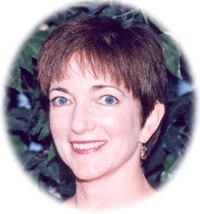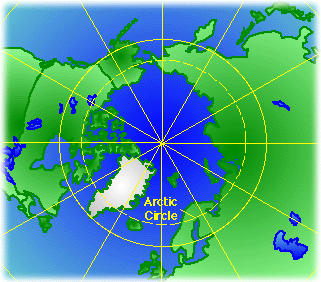
|


I will be observing/parcticipating in both the HARC Project, Human Dimensions of Arctic Systems, and the Aerosonde Project (Applications of Aerosondes to Long-Term Measurements of the Atmosphere and Sea Ice Surface in the Beaufort/Chukchi Sector of the Arctic Ocean ) headed by PI Dr. Judith Curry of Georgia Technical Universityıs Department of Earth and Atmospheric Sciences, Drs. James Maslanik and Brian Argrow of the University of Colorado, Boulder. What makes these projects so important is that weather, climate change, and variable environmental conditions affect human lives. These two projects are critical to the livelihood and culture of the people in the North Slope region of Alaska. The scientific materials, procedures, research, instruments, models and everything that follows in this writing is secondary to a basic human objective. The environment is changing, for whatever reasons, either natural cycles or human-induced factors or a little of both, and humans are directly affected. The affect of environmental change is swift in the Arctic a few degrees shifting of temperature has a more dramatic impact in this harsh region than in more temperate climes. It is a grave mistake to consider the environmental changes in the Arctic isolated or of little consequence. Such changes are harbingers of changes on a global level. Recent climate changes have had significant impact on the lives of native peoples in northern Alaska. The early retreat of the sea ice in the summer months has led to changes in animal populations (whales, seals, walrus, birds, and caribou) in terms of migratory patterns and accessibility. Since the native peoples are somewhat dependent on hunting and subsistence living, these changes in the animal populations have had significant impact on their livelihood and culture. The weather patterns are also changingearly retreat of the ice seems to trigger, in some way, more severe winter storms and erosion of the shore. As a result of these rapid changes, the old tried and true methods of predicting weather patterns and ice behavior are not as accurate as they once were, and native peoples must learn and incorporate new methods of prediction and decision-making without compromising their cultural values. Scientists are interested in understanding ways in which the n! ative peoples can apply Aerosonde technology in their lives, and how technology will affect their culture and social systems. The HARC Initiative HARC initiative projects are multi-purpose rather than a single directive. HARC is an NSF (National Science Foundation) project that examines the ways in which humans affect and are affected by the Arctic system. This multi-faceted initiative, which is part the ARCSS (Arctic System Science) program, incorporates biological, physical, and social sciences. The goals of ARCSS projects are to understand the global and regional impact of the arctic climate system and its variability; to determine the role of the Arctic in global biogeochemical cycling; to identify global change impacts on the structure and stability of arctic ecosystems; and to establish the links between environmental change and human activity The HARC initiative speaks directly to this last goal - the active development of understanding the complex interdependencies between humans and the arctic environment. HARC seeks to understand and enhance the local decision-making process on the North Slope of Alaska in the face of rapid climate change. HARCıs primary goal is to help everyone in the North Slope Community, both native and non-native, share and evaluate information and knowledge concerning climate and environmental conditions. Traditional knowledge, as well as scientifically collected data, is a critical part of HARC research. One aspect of HARC research is to use regional weather data to generate models for changes sea-ice variability, extreme weather events, storm surges, flooding, coastal erosion, and other environmental factors. Such models are then used to predict the probability of conditions that affect coastal communities. Surveys and management of marine mammal resources, transportation, and offshore resource development are of prime importance to the residents of the North Slope, and accurate weather and environmental models are critical components of the decision making process for the communities. There will be a HARC meeting in August involving the scientists and the members of the communities in Barrow. The purpose of the meeting is to present the research information, answer questions posed by the residents, gather input from the residents, and develop policy regarding planning for extreme weather events. I am sure that much more will be involved, but I will have to wait until August to find out. Aerosonde Project Applications of Aerosondes to Long-Term Measurements of the Atmosphere and Sea Ice Surface in the Beaufort/Chukchi Sector of the Arctic Ocean The NSF Aerosonde Project uses robotic airplanes for remote sensing and environmental data collection. This project overlaps and supports many of the goals of the HARC Project. Aerosondes are the technological tools used to collect environmental data that will be used by HARC (and other agencies throughout the scientific community) to develop atmospheric and environmental models that will be used in formulating policy for decision making processes in the North Slope region of Alaska. The Aerosonde has been specifically developed for meteorological and environmental sensing over oceans and in remote areas and harsh conditions In Barrow, Aerosondes have been used to measure surface temperatures of sea ice and the temperature variation between newly formed ice and heat and moisture coming from open water leads. These measurements help determine how the new ice forms and how much heat and moisture radiates from the open water leads. An important advantage of the Aerosonde in this type of research is that it can be used to collect a wide range of environmental data at less expense than traditional manned aircraft. Aerosondes are relatively inexpensive, can fly in harsh conditions (eliminating risking human lives), have incredible range and fuel efficiency, can be flown from any point on the globe, and can be outfitted with an array of sensing equipment. Tracking weather patterns, sea-ice and pack ice characteristics and changes, coastline erosion, topography, and wildlife monitoring are just a few of the Aerosonde's capabilities. I am parcticularly interested in the GIS applications for wildlife monitoring in the Arctic Ocean and in tundra regions. The immediate goals for the July and August portion of the Aerosonde Project are to test new instrumentation and new de-icing mechanism, and to collect atmospheric data and surface sea ice characteristics/data. The atmospheric measurements will be assimilated into numerical weather prediction (NWP) model analyses that will improve weather forecasts in this region of the arctic. Surface sea ice data will be used to evaluate sea ice characteristics and to develop improved sea ice models. Long-term goals of the Aerosonde Project include making the Aerosonde more efficient for arctic applications and integrating additional instrumentation (for example, laser altimeters and video cameras). Regular deployment of Aerosondes is planned in order gather more data about to atmospheric conditions and sea ice characteristics. Another important aspect of the long-term project is the development of an archiving system and a distribution system for the Aerosnde data. Assimilating Aeroson! de data with data from other remote sensing centers will provide comprehensive information and support to many research projects in the arctic region. Project Directors The HARC Project and the Aerosonde Project are directed by teams from the University of Colorado Boulder and Georgia Technical University. At the end of May I travel to Boulder to meet with members of the HARC team, headed by Dr. Amanda Lynch (director of HARC and head of CIRES), and to be introduced to the Aerosonde airplane and members of the Aerosonde project. Key players are Dr. James Maslanik, remote sensing and climate modeling specialist, Dr. Brian Argrow, co-PI for a research team (headed by Dr. Curry) primarily responsible for engineering a de-icing or anti-icing system for the Aerosondes, Leann Lestak, GIS specialist for HARC, Brenda Mulac, Ph.D. candidate in atmospheric sciences, and Liz Cassun, storm-events specialist. In June travel to Georgia Tech to meet with Dr. Judith Curry, Principle Investigator for the Aerosonde Project. My role and personal objectives It is exciting, and challenging, to have an opportunity to be involved with two different but intricately connected projects. I am looking forward to meeting and interacting with the people of Barrow, parcticularly the students. HARC researcher Leanne Lestak, GIS specialist, has been working with Barrow High School to set up a GIS lab. The students are involved and excited about learning about their community from a totally different perspective. By learning and using GIS applications, these students will become more informed community planners. I am curious to find out how data from the Aerosondes can be used with GIS. Equally interesting is the opportunity to learn about Inupiat traditional knowledge and culture and how the (inevitable) influx of western technology affects the social system. The Aerosonde Project is exciting in that I will be able to use real-time and archived date to develop scenarios for students. Young students will be able to compare temperature and weather conditions in Barrow to those at home (North Carolina). High school students will be able to incorporate aspects of the Aerosonde aerodynamics into their physics classes, as well as use statistical modeling based on weather data. Personally, I am keenly interested in exploring Aerosonde applications for wildlife surveys and monitoring, parcticularly with marine mammals. According to Dr. Curry, a concern of the native population in Barrow is that they do not feel that whaling regulations are based on accurate counts of the whales in the area. At the same time, they (the natives) are leery of using the Aerosondes in this manner because of the fear that the aircraft will frighten the whales. I am wondering the minimum distance at which a whale or walrus can sense an Aerosonde. Hmmm . . . definitely something to work on! My bags are packed (almost), and I am ready to go!
  Be sure to check out the images in the journal entries!
Be sure to check out the images in the journal entries!
March 2004
July 2003
May 2003
August 2002
|


